

Mostar
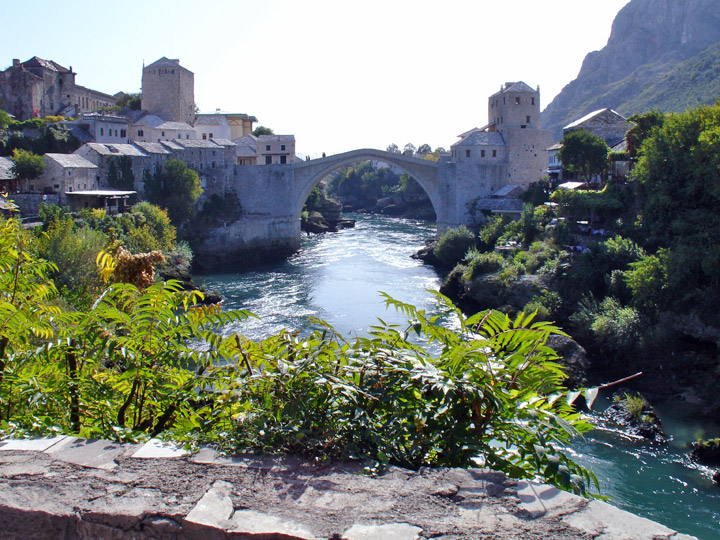
The Old Bridge (Stari Most)
Founded in the late 15th century, Mostar was the chief administrative city for the Ottoman Empire in the Herzegovina region. The Austro-Hungarian Empire absorbed Mostar in 1878 and then it became part of Yugoslavia in the aftermath of World War I. Since 1881 Mostar has been the seat of the Bishopric of Mostar-Duvno. The city's symbol, The Old Bridge (Stari Most) is one of the most important constructions of Ottoman Era and built by the student of the famous Ottoman Architect Mimar Sinan ( Architect Sinan), Mimar Hayrettin. In 1939, Mostar became a part of the Banovina of Croatia, and during the Second World War was an important city in the Independent State of Croatia.
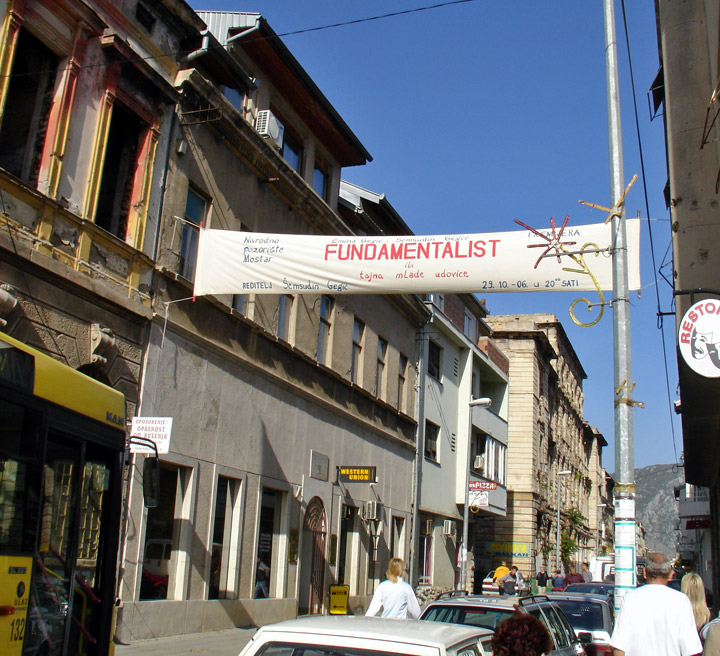
main city street
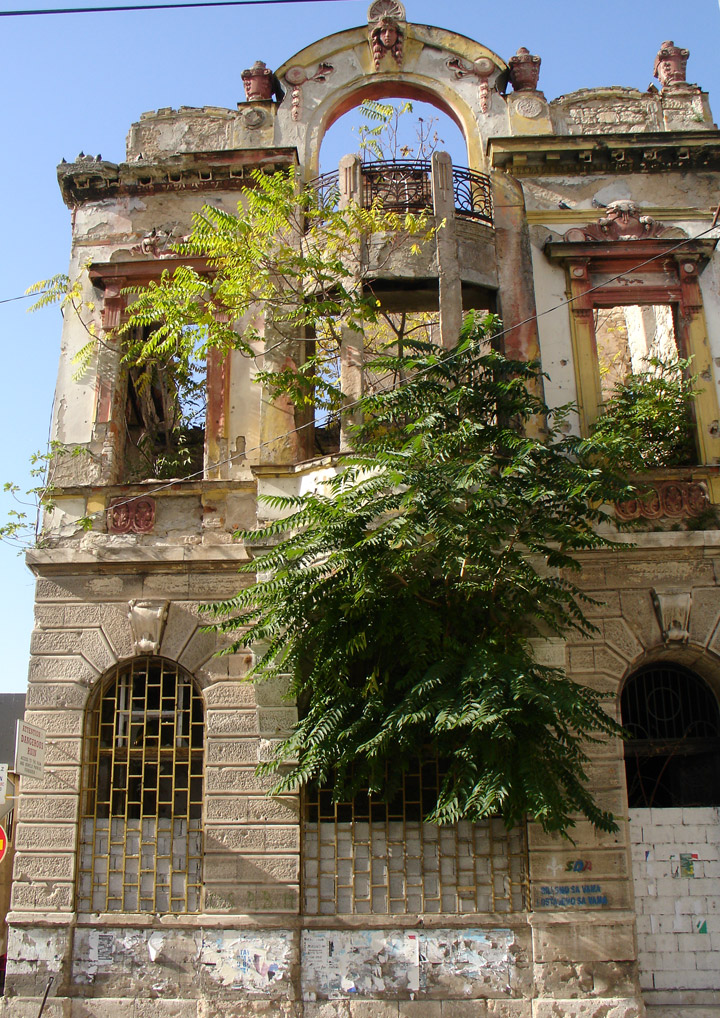
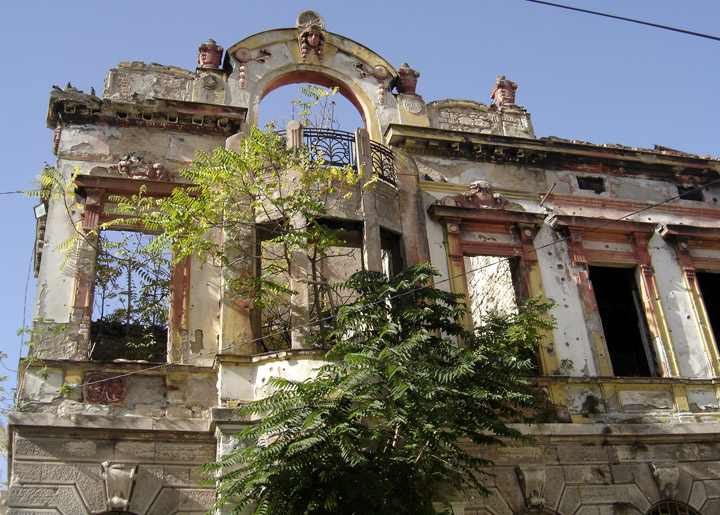
building destroyed during the 1992 warar
Between 1992 and 1993, after Bosnia and Herzegovina declared independence from Yugoslavia, the town was subject to an 18 month siege. The Yugoslav People's Army (JNA) first bombed Mostar on April 3rd, 1992 and over the following week gradually established control over a large part of the town. On April 8th, the army of Bosnia and Herzegovina (Armija Bosne i Hercegovine, ABIH) was joined by the Herzegovina Croats founded, the Croatian Defense Council (Hrvatsko Vijeće Obrane, HVO) as their military formation. These two engaged against the JNA forces in combat. The JNA shelling damaged or destroyed a number of civilian objects and resulted in a mass killing of thousands of innocent civilians. Amongst destroyed monuments were a Franciscan monastery, the Catholic cathedral and the bishop's palace, with a library of 50,000 books, as well as the Karadžoz-bey mosque, Roznamed-ij-Ibrahim-efendija mosque and twelve other mosques, as well as secular institutions. Also, Saborna Crkva (Orthodox Cathedral Church) that was built in 1863-1873, was destroyed by extremists among Croat-Muslim forces during the night of June, 15, 1992. On June 12th 1992, the ABIH (4th Corps) and HVO military forces amassed enough weaponry and manpower to force the JNA troops out of Mostar. During the siege that ensued, the city was bombarded by the Bosnian Serbs from the mountains to the east.
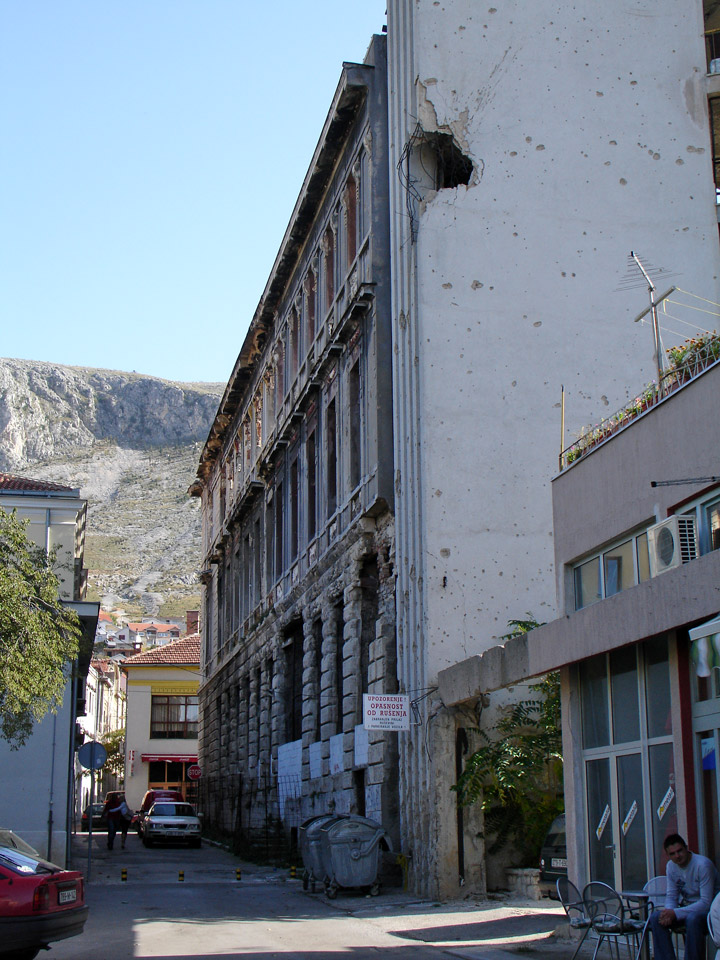
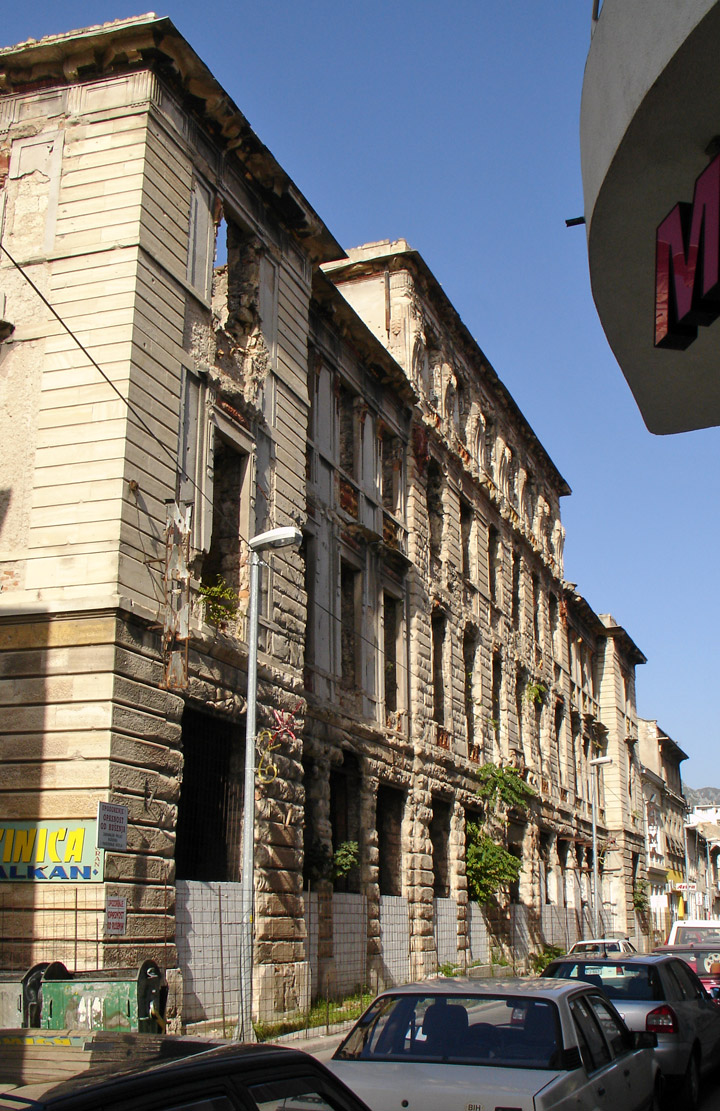
war damaged buildings
After the Serbs were driven out, the heavily armed, Croatia funded Bosnian-Croat forces (HVO) turned their guns at their once allies, the Army of Bosnia and Herzegovina, in hope of capturing the whole city for themselves in the light of Bosnian Croat Secessionist campaign. The campaign resulted in the deeply rooted division of the city of Mostar into West Mostar (run by HVO) and the East Mostar (run by the Bosnian Government). HVO forces (and its smaller divisions) engaged in a mass execution, ethnic cleansing and rape on the Bosnian people of the West Mostar and its surrounds and a fierce siege and shelling campaign on the Bosnian Government run East Mostar. HVO campaign resulted in thousands of injured and killed and this city's Old Town reduction to Rubble. On November 9, 1993 HVO troops destroyed the city's most recognizable landmark an Ottoman era bridge built in 1566, which is the city's namesake. Today, the city is slowly recovering from divisions created by the conflict. Some of the scars of that division still remain today.
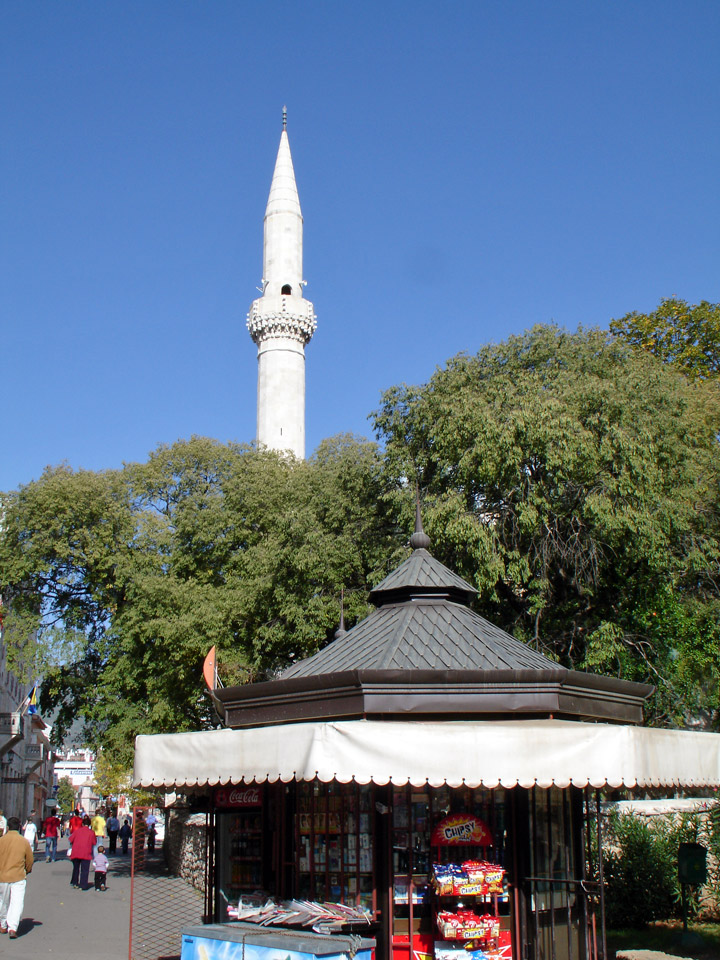
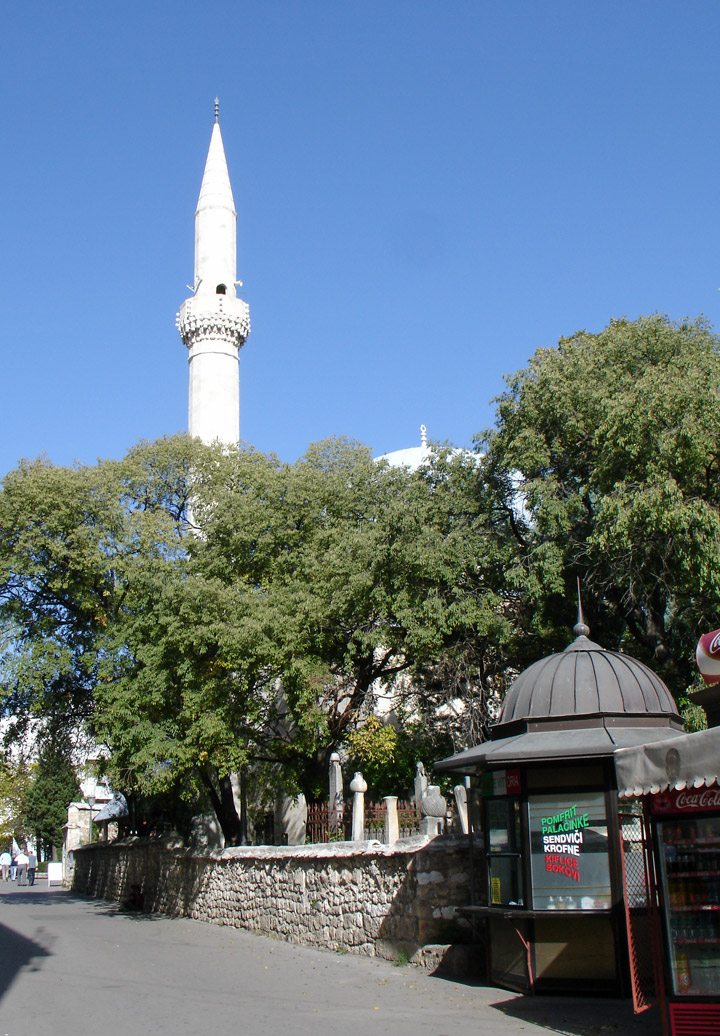
mosque
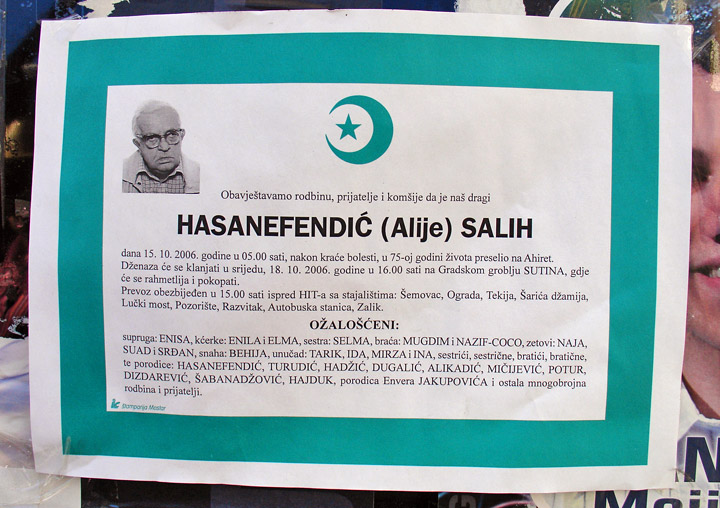

death notices
Since the end of the wider war in 1995, great progress is being made in the reconstruction of the city of Mostar. The city was under direct monitoring from a European Union envoy, several elections were held and each nation was accommodated with regard to political control over the city. Over 15 million dollars has been spent on restoration.
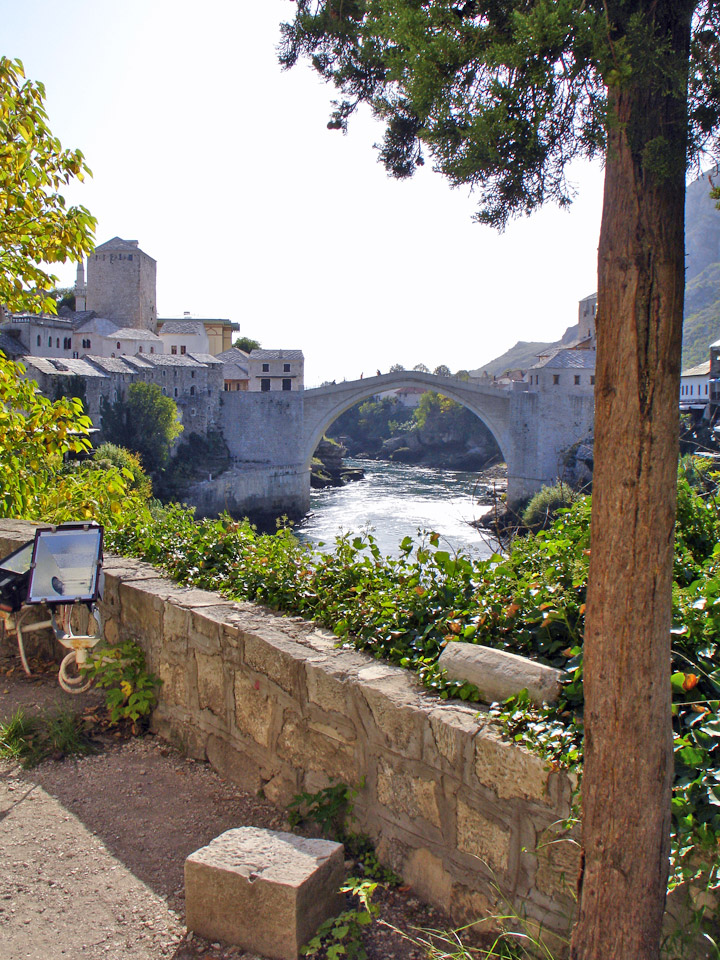
the restored Old Bridge
A monumental project to rebuild the Old Bridge to the original design, and restore surrounding structures was initiated in 1999 and mostly completed by Spring 2004. The money for this reconstruction was donated by the United States, Turkey, Italy, the Netherlands, and Croatia. A grand opening was held on July 23, 2004 under heavy security.
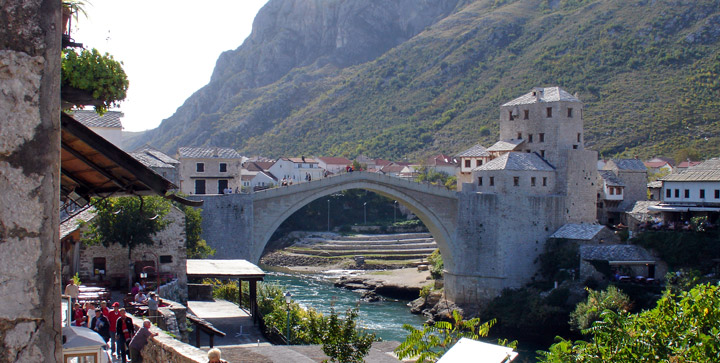
on the World Heritage list
In July 2005, UNESCO finally inscribed the Old Bridge and its closest vicinity onto the World Heritage List. Previously, the inscription had been repeatedly deferred on account of poor quality of post-war reconstructions and deplorable use of modern materials in the old town.
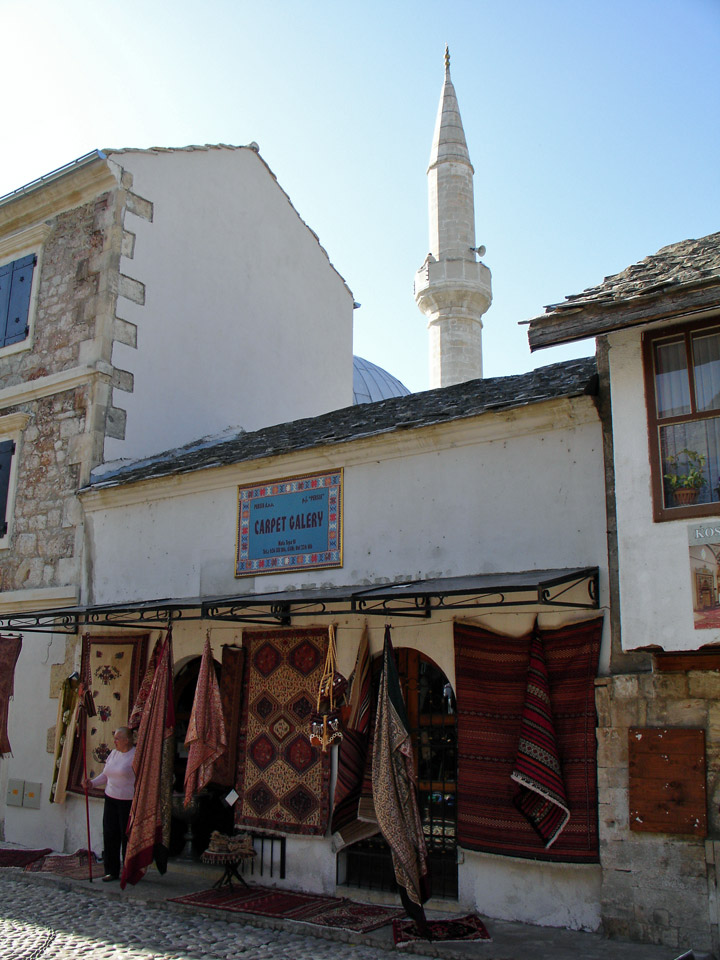
carpet market
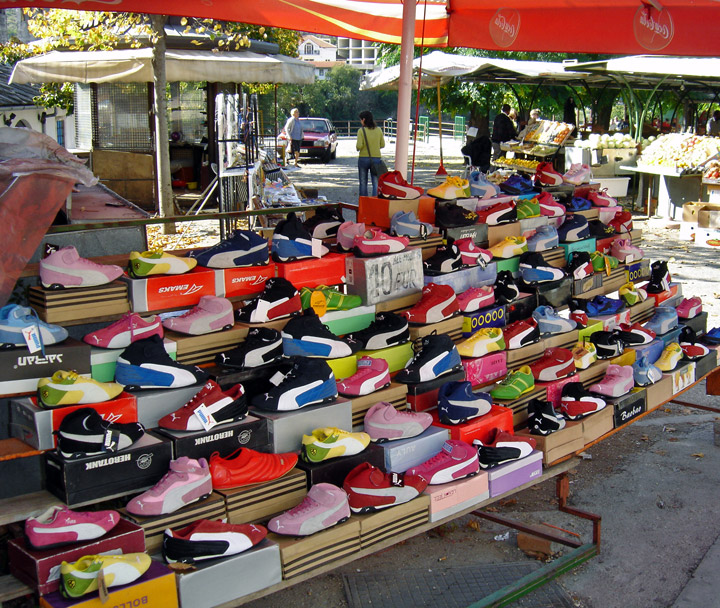
brightly colored shoes
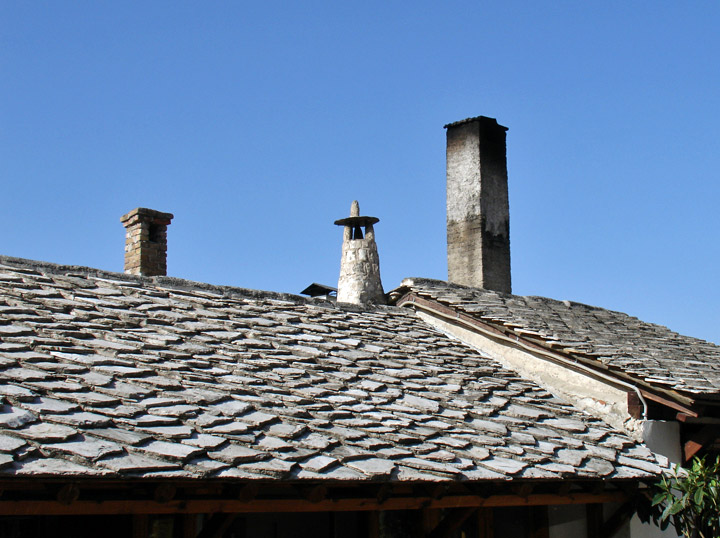
slate stone roof covering
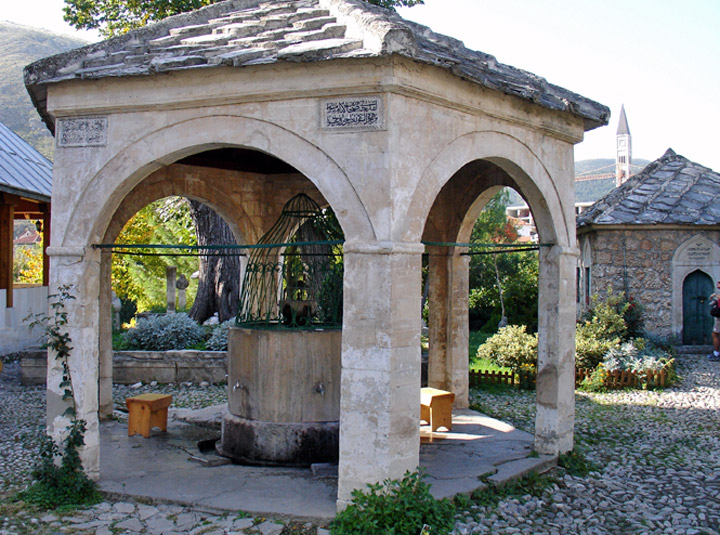
fountain for cleansing before players

on the Muslim side of the bridge
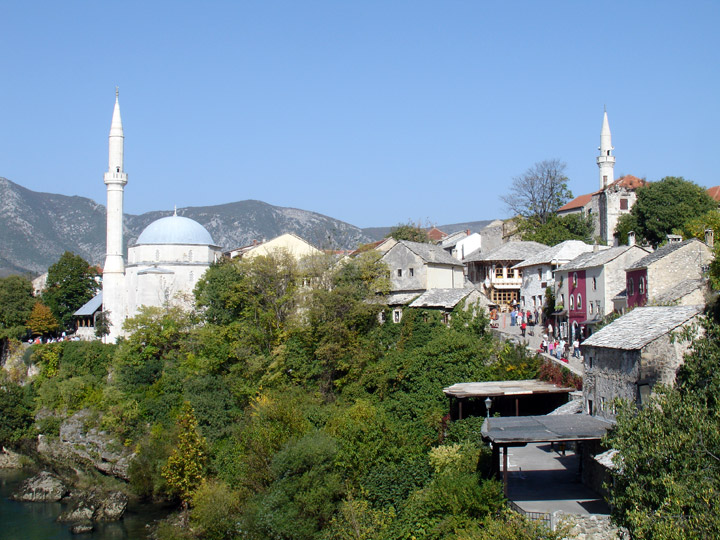
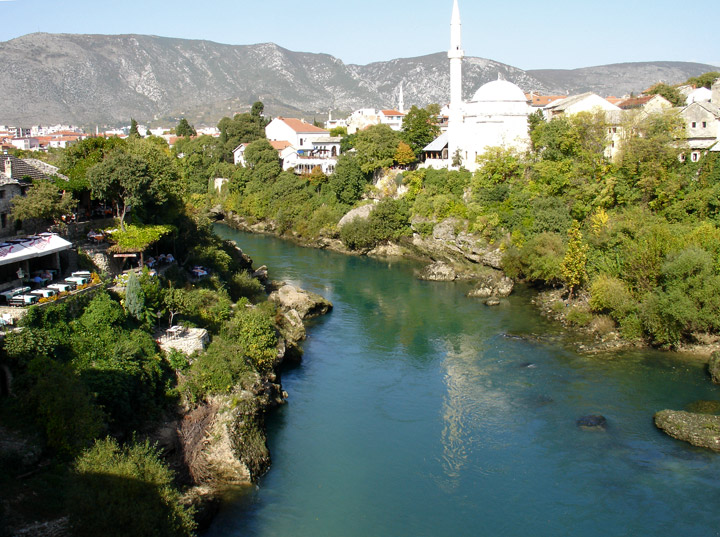
view from the bridge
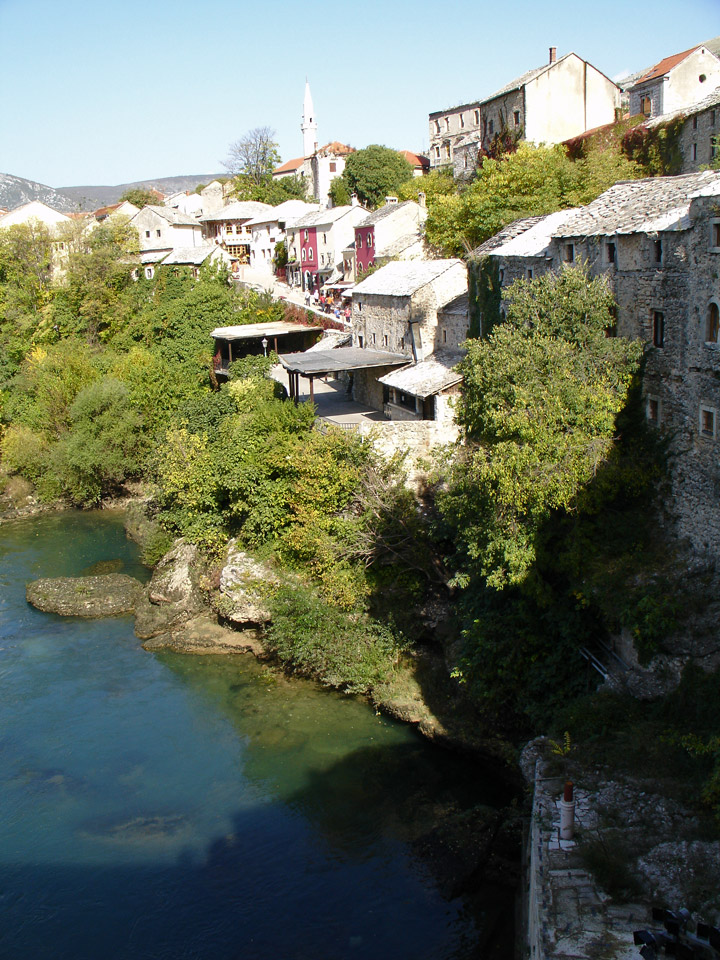
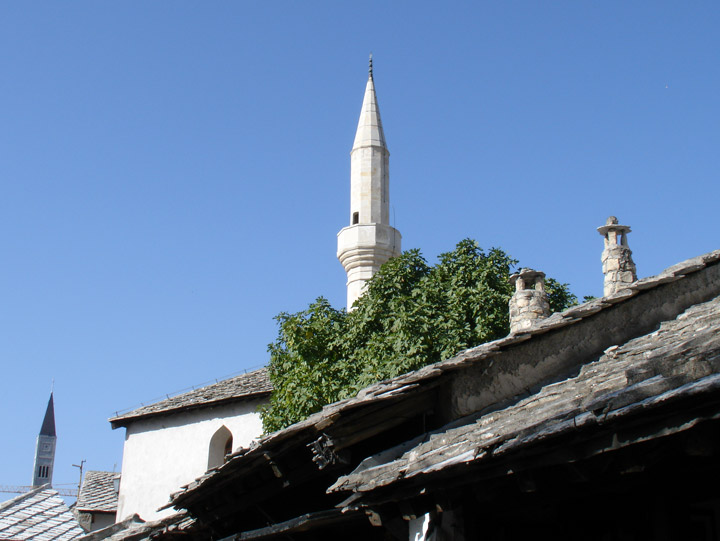

Welcome to the restaurant
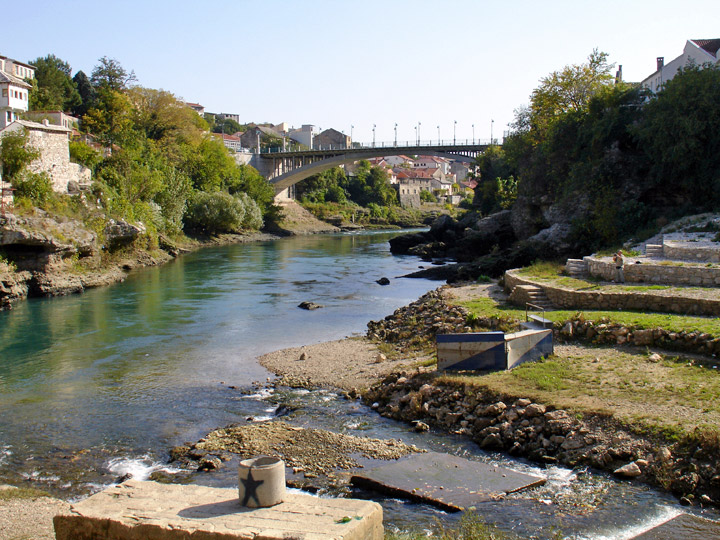
looking to the modern vehicle bridge
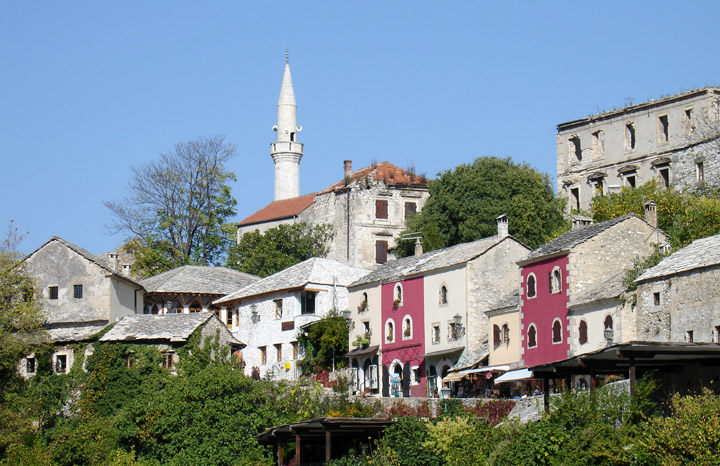
on the Muslim side
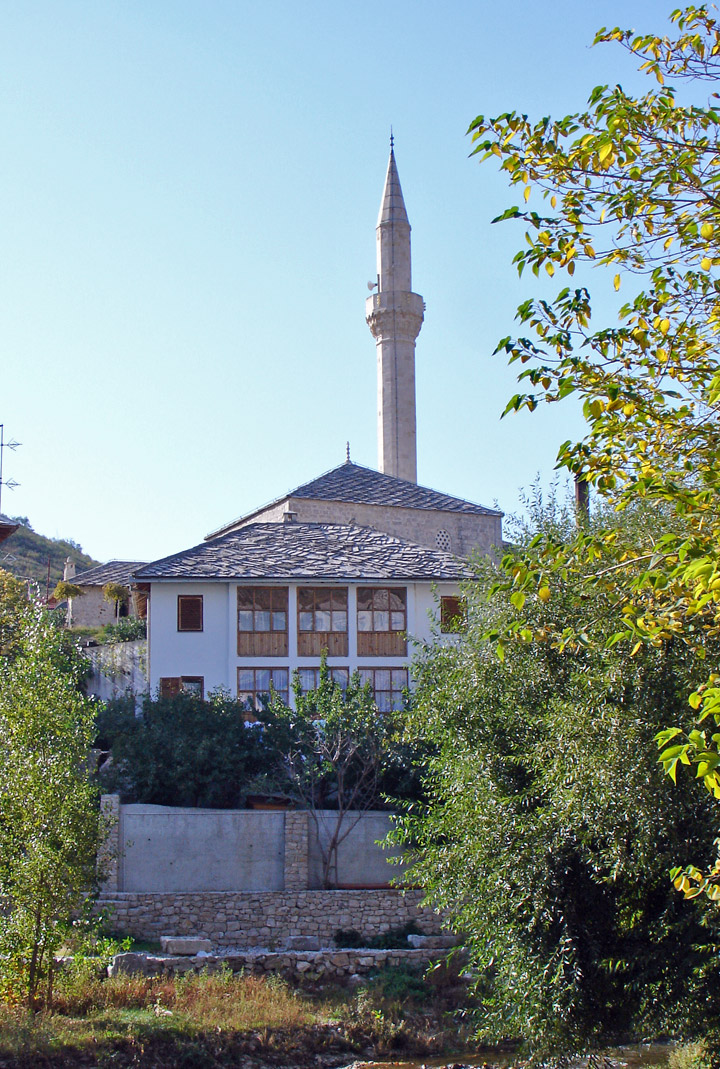
mosque
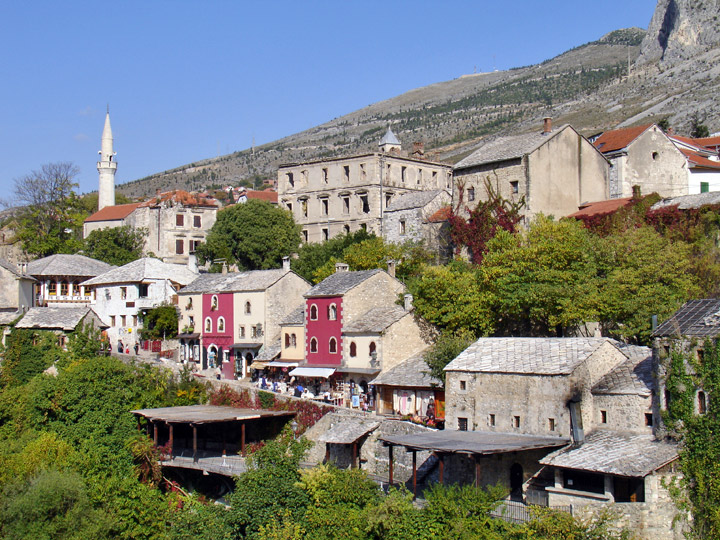
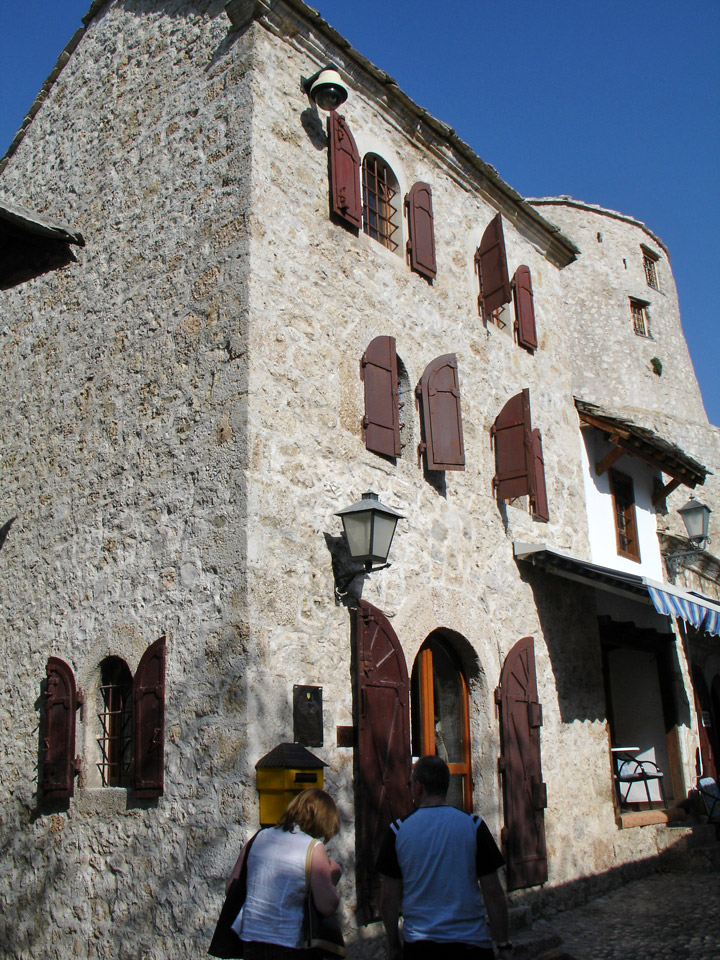
street near the bridge
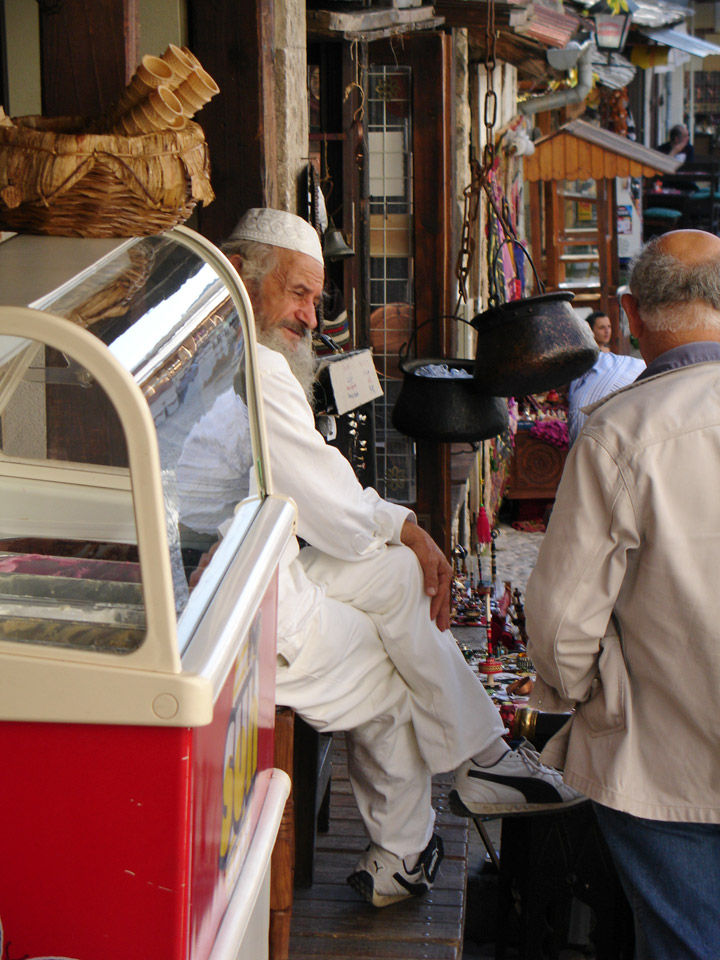
Muslim salesman

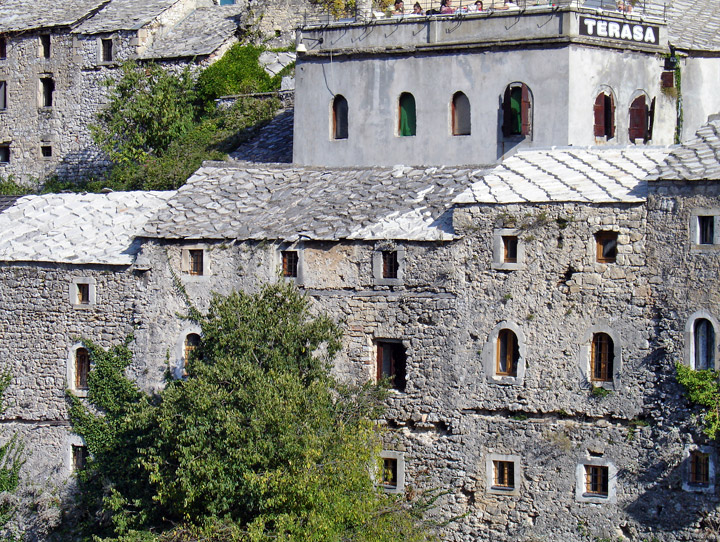
old stone buildings
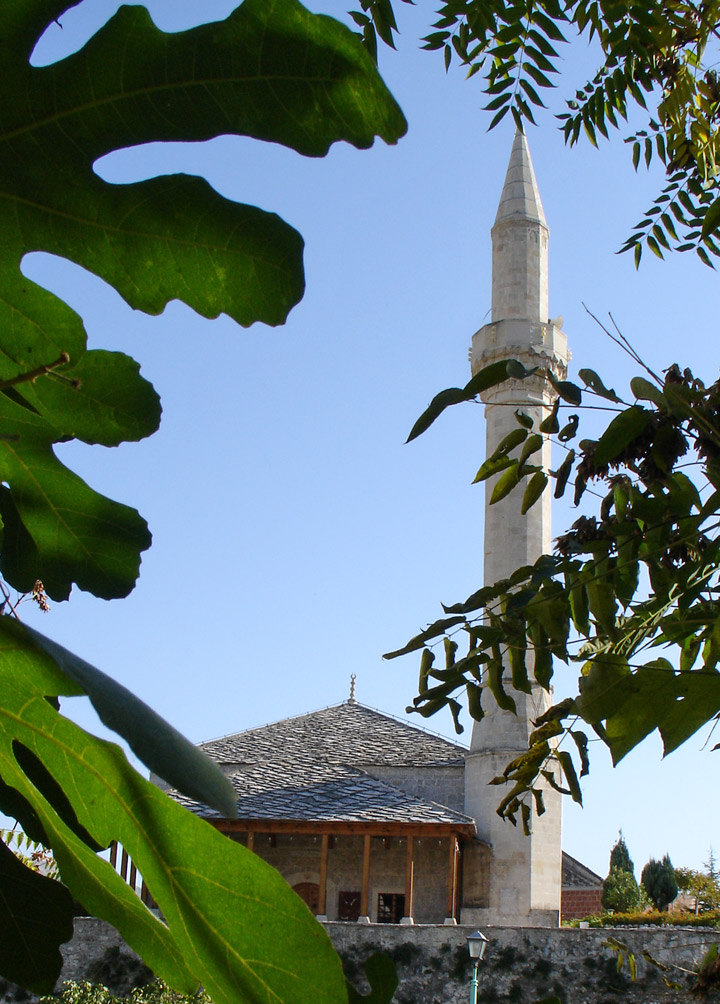

large mosque